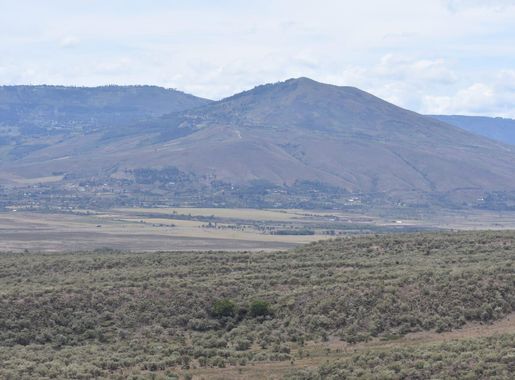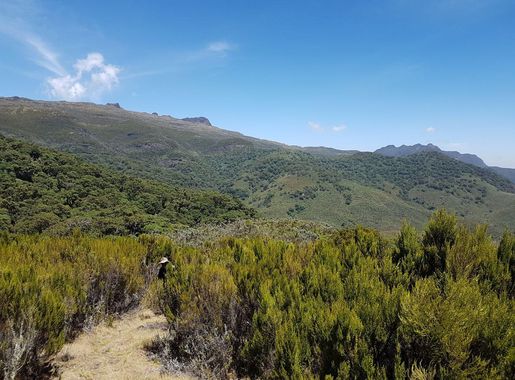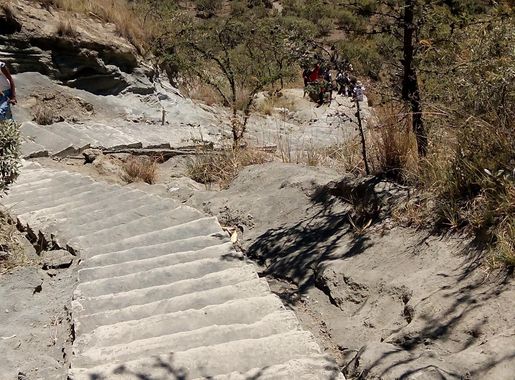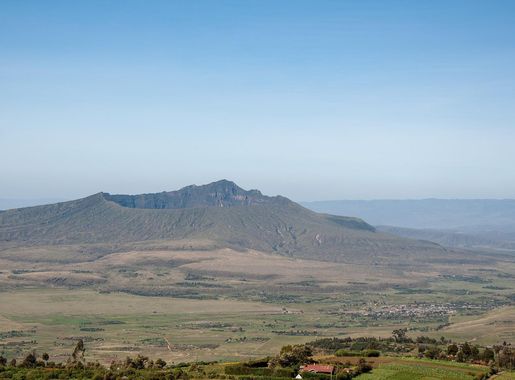
Majestic Mount Longonot: The Dormant Volcano of Kenya
Explore the stunning Mount Longonot, a dormant volcano in Kenya's Great Rift Valley, offering breathtaking hikes, wildlife sightings, and panoramic views.
Mount Longonot is a dormant volcano located in the Great Rift Valley of Kenya. It stands at an impressive 2,776 meters above sea level, offering breathtaking views and thrilling adventures. The mountain's name, derived from the Maasai word 'Oloonong'ot', means 'mountain of many spurs' or 'steep ridges,' which is fitting given its jagged crater rim and rugged terrain. Hiking enthusiasts will find the trek up to the crater's rim both challenging and rewarding. The hike takes approximately 4-5 hours round trip and passes through diverse landscapes, from dense forests at the base to open grasslands and rocky paths as you ascend. Once at the top, hikers are treated to panoramic views of the Rift Valley and the crater itself, which spans 8 kilometers in circumference. Mount Longonot is also home to a variety of wildlife, including zebras, giraffes, and buffaloes, which can often be spotted grazing in the surrounding national park. Bird watchers will be delighted by the numerous bird species that inhabit the area. The best time to visit is during the dry season, from June to October, when the trails are more accessible and the weather is clear.
Local tips in Mount Longonot
- Start your hike early in the morning to avoid the midday heat and to have more time to enjoy the views.
- Wear sturdy hiking boots and carry plenty of water and snacks as there are no facilities along the trail.
- Hire a local guide for better navigation and to learn more about the area's flora and fauna.
- Check weather conditions before your visit, as the trails can become slippery and challenging during the rainy season.
- Bring a camera with a good zoom lens to capture the stunning landscapes and wildlife from a distance.
Majestic Mount Longonot: The Dormant Volcano of Kenya
Mount Longonot is a dormant volcano located in the Great Rift Valley of Kenya. It stands at an impressive 2,776 meters above sea level, offering breathtaking views and thrilling adventures. The mountain's name, derived from the Maasai word 'Oloonong'ot', means 'mountain of many spurs' or 'steep ridges,' which is fitting given its jagged crater rim and rugged terrain. Hiking enthusiasts will find the trek up to the crater's rim both challenging and rewarding. The hike takes approximately 4-5 hours round trip and passes through diverse landscapes, from dense forests at the base to open grasslands and rocky paths as you ascend. Once at the top, hikers are treated to panoramic views of the Rift Valley and the crater itself, which spans 8 kilometers in circumference. Mount Longonot is also home to a variety of wildlife, including zebras, giraffes, and buffaloes, which can often be spotted grazing in the surrounding national park. Bird watchers will be delighted by the numerous bird species that inhabit the area. The best time to visit is during the dry season, from June to October, when the trails are more accessible and the weather is clear.
When is the best time to go to Mount Longonot?
Iconic landmarks you can’t miss
Mount Longonot National Park
Explore the stunning landscapes and rich wildlife of Mount Longonot National Park, a premier hiking destination in the heart of Kenya's Great Rift Valley.
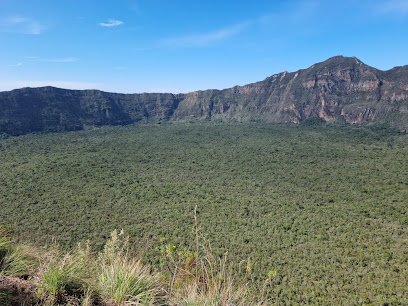
Mt Longonot National Park
Discover the breathtaking beauty of Mt Longonot National Park, a premier hiking destination in Kenya with stunning volcanic landscapes and diverse wildlife.
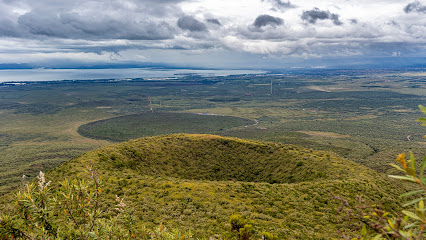
Longonot Volcano crater
Discover Longonot Volcano Crater, a stunning hiking area in Nakuru, Kenya, showcasing breathtaking views and diverse wildlife for nature lovers.
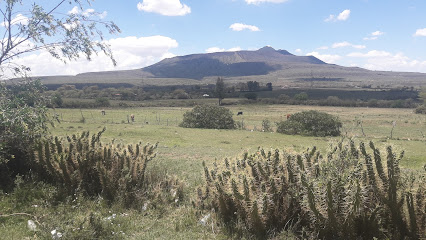
Mt Longonot hiking trail
Discover the breathtaking beauty of Mt. Longonot hiking trail, where stunning landscapes and diverse wildlife create an unforgettable outdoor adventure.
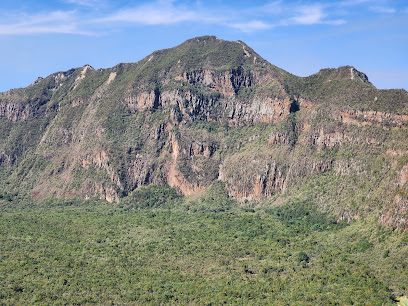
Unmissable attractions to see
Banana Hill Art Gallery
Explore the vibrant world of African art at Banana Hill Art Gallery, where creativity and culture come alive in a stunning collection of paintings and sculptures.
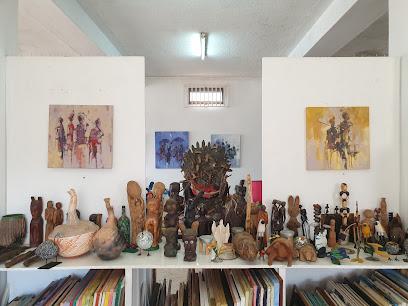
Watamu Boat Rides Naivasha
Discover the tranquil beauty of Lake Naivasha with scenic boat rides at Watamu Boat Rides Naivasha, a perfect escape into nature's embrace.
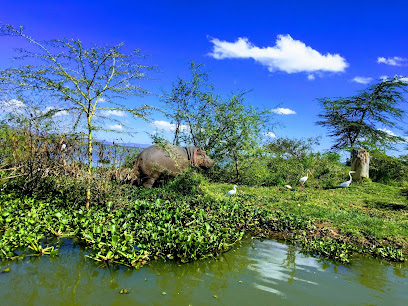
Buxton Tunnel, Limuru
Discover the enchanting Buxton Tunnel in Limuru, a unique hiking destination blending adventure, history, and stunning natural landscapes.
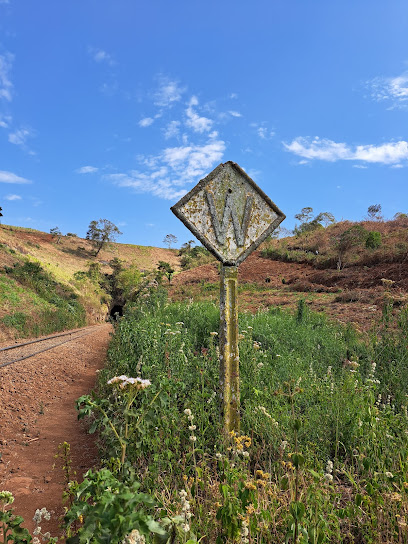
Hippo Point
Explore the natural beauty and wildlife of Hippo Point in Kongoni, a serene retreat perfect for relaxation and unforgettable experiences.
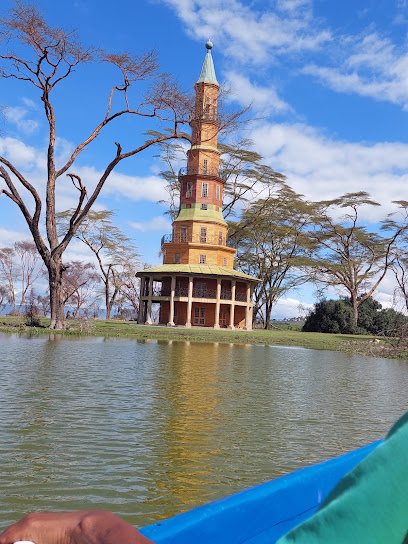
Crescent Island
Discover the serene beauty of Crescent Island, a wildlife paradise in Naivasha, offering breathtaking views and unforgettable encounters with nature.
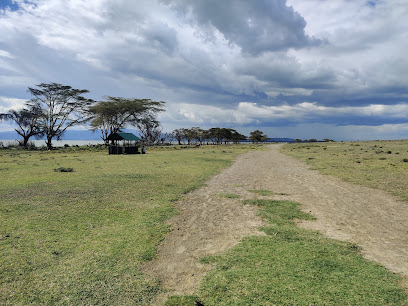
Mawingu Camp Kenya
Discover the beauty and tranquility of Mawingu Camp, a hidden gem in the Kenyan Rift Valley, perfect for nature lovers and adventure seekers.
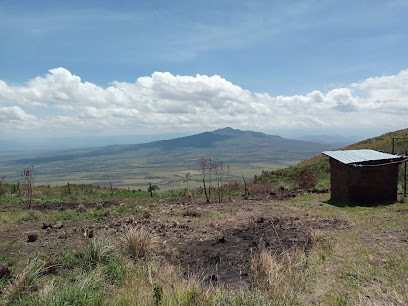
Sanctuary Horse Riding
Experience the beauty of Kenya on horseback at Sanctuary Horse Riding, where adventure meets nature in a stunning wildlife park.
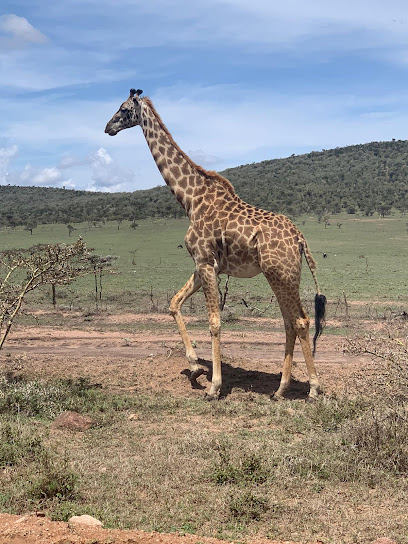
Kitaru
Discover the breathtaking landscapes and rich biodiversity of Kitaru, a must-visit tourist attraction in Naivasha, Kenya.
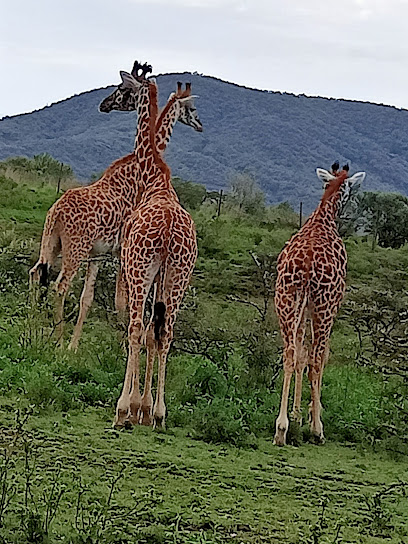
Karagita beach
Explore the tranquil shores of Karagita Beach, a serene escape in Kenya's breathtaking Lake Naivasha, perfect for relaxation and adventure.

Lake Naivasha Achas Boat Safaris
Discover the breathtaking beauty of Lake Naivasha with Achas Boat Safaris, a serene adventure through wildlife and stunning landscapes.
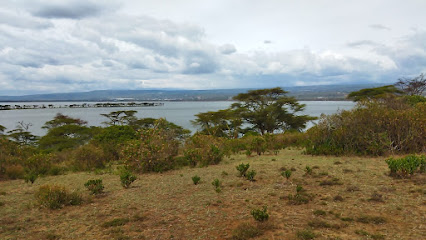
Nakuru County Entry/Exit Signboard
Discover the enchanting landscapes of Nakuru County at the iconic Entry/Exit Signboard - a vibrant gateway to unforgettable experiences.
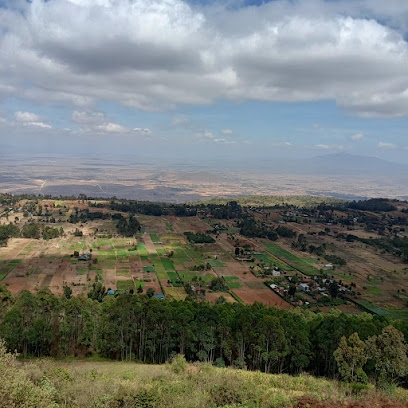
Kamere Adventures, Boat ride & Lake Safaris
Experience the breathtaking beauty of Lake Naivasha with thrilling boat rides and unforgettable wildlife sightings at Kamere Adventures.
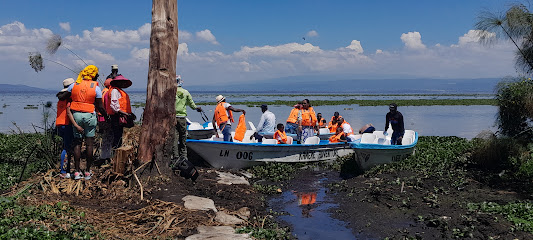
Ihiga ria Nyondo
Explore Ihiga ria Nyondo, a serene tourist attraction in Ngarariga, Kenya, where nature meets rich cultural heritage.
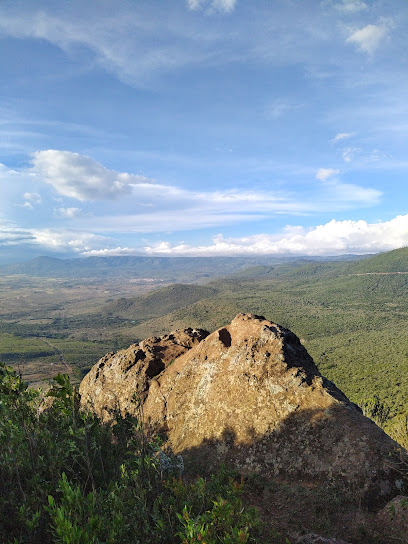
Fisheries Office - Gatamaiyu Forest Hike
Explore the enchanting Gatamaiyu Forest Hike at the Fisheries Office, a serene tourist attraction perfect for nature lovers and adventure seekers in Kenya.
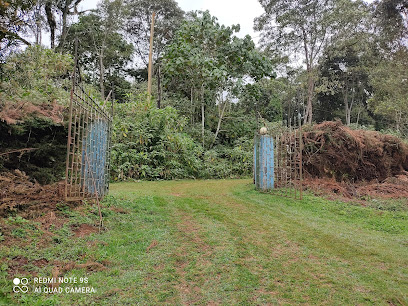
Lake naivasha resort
Experience breathtaking views and diverse wildlife at Lake Naivasha Resort, a tranquil haven for nature lovers and adventure seekers in Kenya.
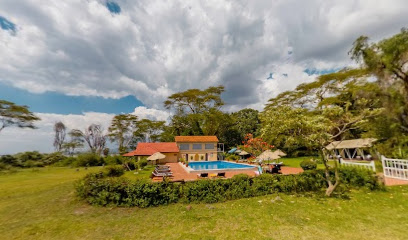
Essential places to dine
Talisman Restaurant
Experience the fusion of local flavors and international cuisine at Nairobi's exquisite Talisman Restaurant in the heart of Karen.

Ranch House Bistro
Discover culinary delights at Ranch House Bistro in Kongoni—where local ingredients meet global cuisine for an unforgettable dining experience.
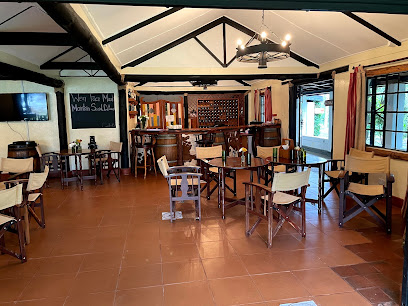
Great Rift Valley Lodge - Restaurant
Discover exquisite dining at Great Rift Valley Lodge - where traditional Kenyan flavors meet breathtaking views in a serene setting.

Matteo's Italian restaurant and bar
Experience authentic Italian cuisine at Matteo's Italian Restaurant & Bar in Karagita – where every meal is a journey through Italy’s rich culinary heritage.
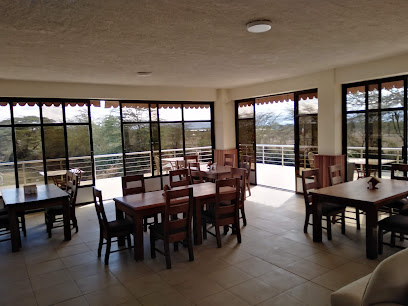
Weekend Inn Restaurant
Experience authentic Kenyan cuisine at Weekend Inn Restaurant in Longonot – where every meal is a celebration of local flavors.
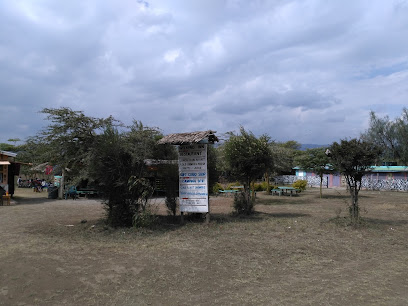
Markets, malls and hidden boutiques
Mount Longonot National Park
Explore the breathtaking scenery and wildlife of Mount Longonot National Park, a stunning national park in the heart of Kenya's Great Rift Valley.
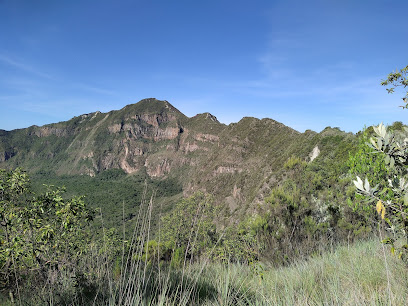
Mt Longonot National Park
Discover the breathtaking landscapes and wildlife of Mt Longonot National Park, a premier hiking destination in the heart of Kenya's Great Rift Valley.
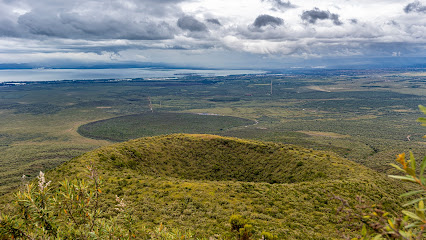
Longonot
Experience the best of shopping and dining at Longonot, a vibrant mall with diverse stores and eateries perfect for tourists seeking excitement.
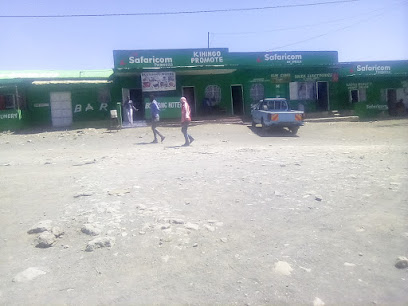
BIRDS SOUVENIR CURIO & SHOP
Discover unique handcrafted souvenirs at Birds Souvenir Curio & Shop in Lake View, a must-visit destination for every traveler looking for authentic gifts.
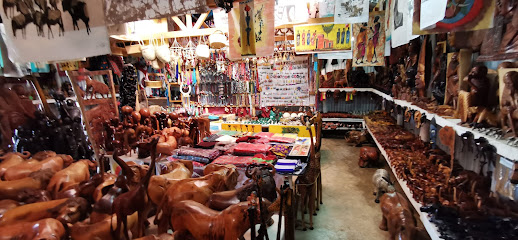
Shalom Shop
Explore the vibrant Shalom Shop in Karagita for local delicacies, fresh produce, and a taste of Kenyan culture in one convenient supermarket.
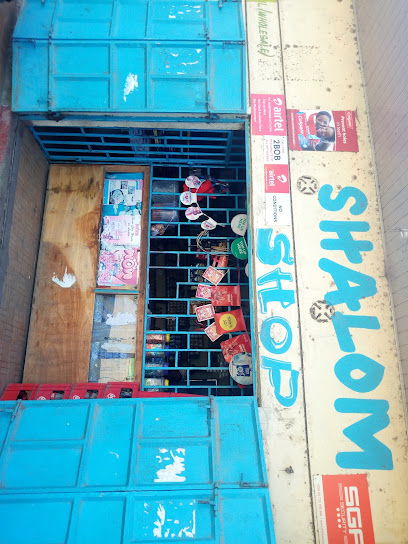
Mwiciringiri Shopping Center
Discover the heart of Longonot at Mwiciringiri Shopping Center – a lively destination for shopping, dining, and local culture.
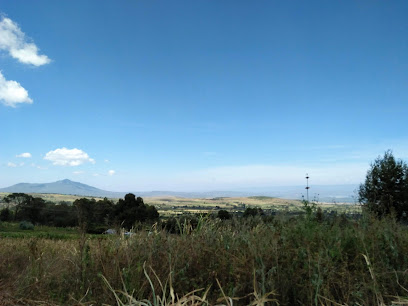
Mama Mike(kdf) Botique
Explore the unique fashion landscape of Naivasha at Mama Mike(kdf) Boutique, where local culture meets contemporary style.
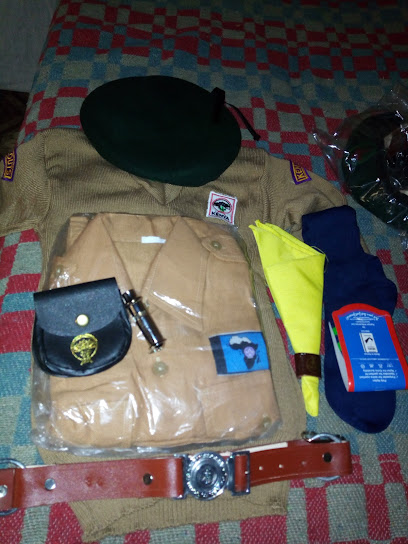
Timeless Shop
Explore Timeless Shop in Longonot for a taste of local Kenyan flavors and a charming grocery shopping experience.

4 Lepers Boutique
Explore the charm of Karagita at 4 Lepers Boutique, where local craftsmanship meets contemporary fashion in a stunning collection.

Dreams Wines & Spirits
Discover a world of exquisite wines and spirits at Dreams Wines & Spirits, your go-to destination for beverage exploration and enjoyment.
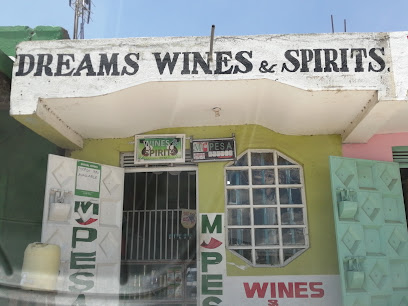
Step by step shop
Discover unique Kenyan crafts and souvenirs at Step by Step Shop, a vibrant store celebrating local artistry and culture.
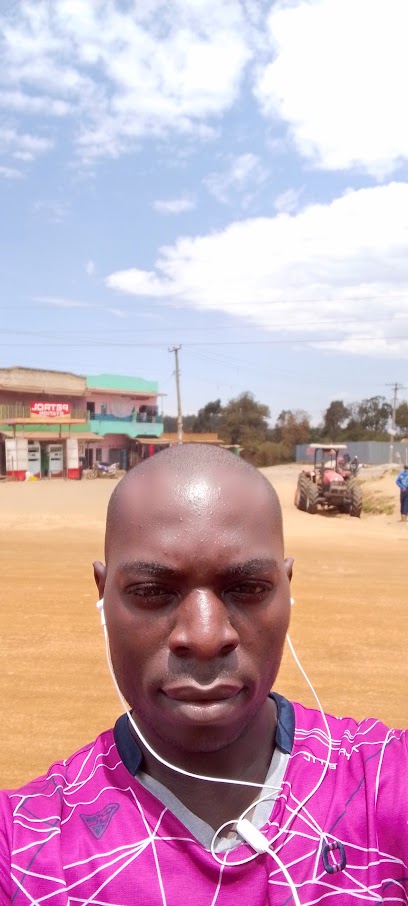
Munyoroku Butchery
Discover Munyoroku Butchery in Longonot: your gateway to authentic Kenyan meats and culinary traditions.
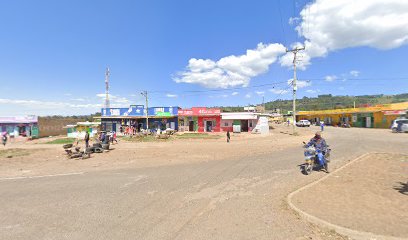
Salome mwgemne
Explore the best electronics at Salome mwgemne in Sulmac Village, your ultimate destination for the latest tech gadgets and accessories.

Kamiru mini supermarket
Discover local flavors and essential supplies at Kamiru Mini Supermarket in Longonot, a must-visit for every traveler.

Wamukami Cereals.
Discover the authentic flavors of Kenya at Wamukami Cereals, where local agriculture meets community spirit.

Essential bars & hidden hideouts
Local Edition Lounge
Experience the best of Kenyan cuisine at Local Edition Lounge, a vibrant grill in Kinamba, Naivasha, perfect for food lovers and tourists alike.

Lucky Bar 1
Discover the lively atmosphere and diverse drink selection at Lucky Bar 1, a vibrant bar in the heart of Kenya's nightlife.
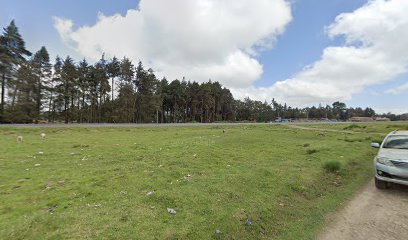
Kindaruma Bar & Restaurant
Discover the vibrant flavors of Kenya at Kindaruma Bar & Restaurant, where grilled delights and local hospitality come together.
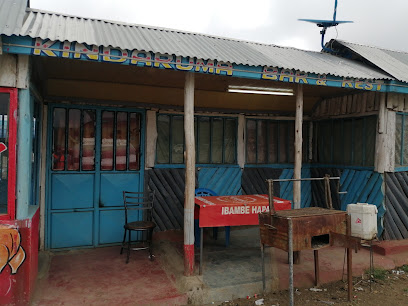
Phasebook bar
Discover the cozy charm of Phasebook Bar in Naivasha, where relaxation meets vibrant local culture and refreshing drinks.
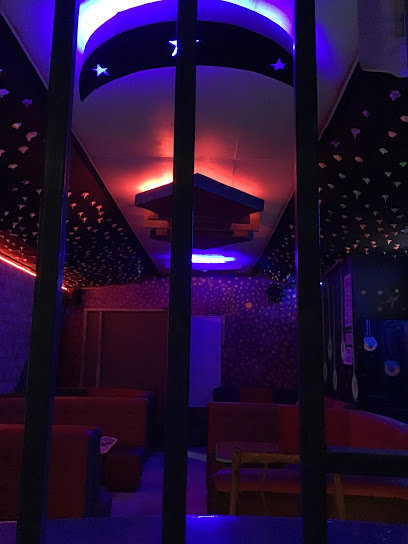
Marangi Bar
Experience the vibrant nightlife of Naivasha at Marangi Bar, a perfect place to unwind with drinks and friendly conversations.
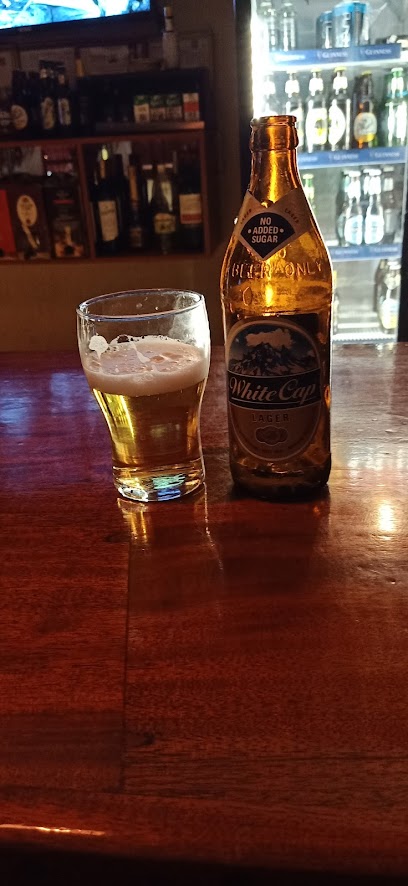
The Weekend Inn Bar
Unwind at The Weekend Inn Bar in Longonot, where vibrant atmosphere meets refreshing drinks and local camaraderie.

Orchid Pub
Experience the vibrant nightlife of Naivasha at Orchid Pub, a local favorite for drinks and socializing.

Mombasa Raha Bar and Restaurant!
Experience the authentic taste of Kenya at Mombasa Raha Bar and Restaurant, where every meal is a celebration of flavor and culture.
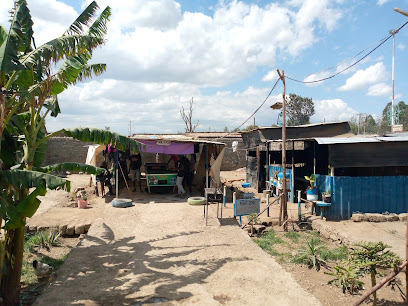
Double M Bar
Experience the lively charm of Double M Bar in Longonot, where refreshing drinks and friendly vibes await every traveler.

Red Rose Bar & Accomodation
Experience the vibrant nightlife and warm hospitality at Red Rose Bar & Accommodation in Longonot, Kenya.
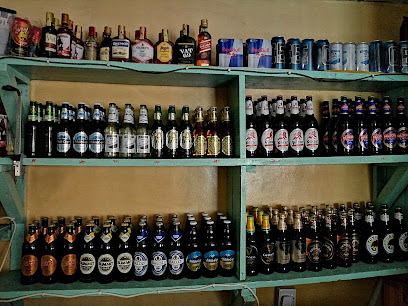
Leenas Pub
Discover the lively ambiance of Leenas Pub in Longonot, a hotspot for socializing and enjoying refreshing drinks in a friendly atmosphere.
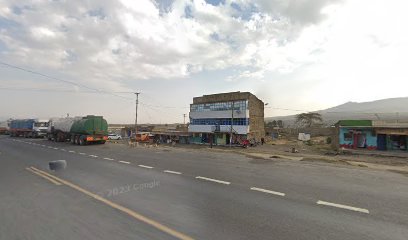
Mt. Longonot Bar & Restuarant
Discover the essence of Kenyan hospitality at Mt. Longonot Bar & Restaurant, where vibrant atmosphere meets delicious local cuisine.
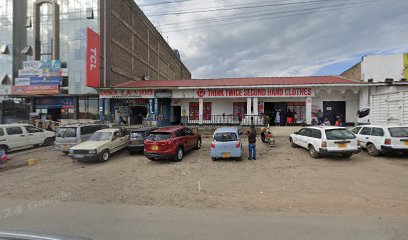
Red Eagle Super Bar
Discover the lively atmosphere of Red Eagle Super Bar in Longonot, offering a diverse drink menu and a welcoming ambiance for all visitors.

Eldama Bar & Restaurant Longonot
Eldama Bar & Restaurant Longonot: Experience the vibrant tastes and lively atmosphere of Kenya in a charming setting.
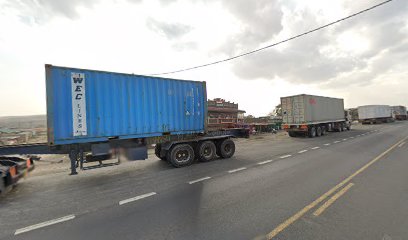
OLD HOUSE SHOP & HOTEL
Discover an exquisite blend of authentic Kenyan cuisine and breathtaking views at Old House Shop & Hotel, your culinary retreat by Mount Longonot.

Local Phrases about Mount Longonot
-
- HelloSalamu
[sa-la-mu] - GoodbyeKwaheri
[kwa-he-ri] - YesNdiyo
[n-di-yo] - NoHapana
[ha-pa-na] - Please/You're welcomeTafadhali
[ta-fa-dha-li] - Thank youAsante
[a-san-te] - Excuse me/SorrySamahani
[sa-ma-ha-ni] - How are you?Uko aje?
[u-ko a-je] - Fine. And you?Poa. Na wewe?
[po-a. na we-we] - Do you speak English?Unazungumza Kiingereza?
[u-na-zun-gum-za ki-in-ge-re-za] - I don't understandSieelewi
[si-e-le-wi]
- HelloSalamu
-
- I'd like to see the menu, pleaseNingependa kuona menyu, tafadhali
[nin-ge-pen-da ku-o-na me-nyu, ta-fa-dha-li] - I don't eat meatSi kula nyama
[si ku-la nya-ma] - Cheers!Mambo!
[mam-bo] - I would like to pay, pleaseNingependa kulipa, tafadhali
[nin-ge-pen-da ku-li-pa, ta-fa-dha-li]
- I'd like to see the menu, pleaseNingependa kuona menyu, tafadhali
-
- Help!Msaada!
[m-sa-a-da] - Go away!Nenda zako!
[nen-da za-ko] - Call the Police!Piga simu polisi!
[pi-ga si-mu po-li-si] - Call a doctor!Piga simu daktari!
[pi-ga si-mu dak-ta-ri] - I'm lostNimepotea
[ni-me-po-te-a] - I'm illNinaumwa
[ni-na-um-wa]
- Help!Msaada!
-
- I'd like to buy...Ningependa kununua...
[nin-ge-pen-da ku-nu-nu-a] - I'm just lookingNinaangalia tu
[ni-na-an-ga-lia tu] - How much is it?Ni bei gani?
[ni bei ga-ni] - That's too expensiveHiyo ni ghali sana
[hi-yo ni gha-li sa-na] - Can you lower the price?Unaweza kupunguza bei?
[u-na-we-za ku-pun-gu-za bei]
- I'd like to buy...Ningependa kununua...
-
- What time is it?Saa ngapi?
[sa-a nga-pi] - It's one o'clockSaa moja
[sa-a mo-ja] - Half past (10)Nusu saa kumi
[nu-su sa-a ku-mi] - MorningAsubuhi
[a-su-bu-hi] - AfternoonMchana
[m-cha-na] - EveningJioni
[jo-ni] - YesterdayJana
[ja-na] - TodayLeo
[le-o] - TomorrowKesho
[ke-sho] - 1Moja
[mo-ja] - 2Mbili
[m-bi-li] - 3Tatu
[ta-tu] - 4Nne
[n-ne] - 5Tano
[ta-no] - 6Sita
[si-ta] - 7Saba
[sa-ba] - 8Nane
[na-ne] - 9Tisa
[ti-sa] - 10Kumi
[ku-mi]
- What time is it?Saa ngapi?
-
- Where's a/the...?Iko wapi...?
[i-ko wa-pi] - What's the address?Anwani ni gani?
[an-wa-ni ni ga-ni] - Can you show me (on the map)?Unaweza kunionyesha (kwenye ramani)?
[u-na-we-za ku-ni-o-nye-sha (kwe-nye ra-ma-ni)] - When's the next (bus)?Basi lifuatalo ni saa ngapi?
[ba-si li-fua-ta-lo ni sa-a nga-pi] - A ticket (to ....)Tiketi (kwenda ...)
[ti-ke-ti (kwen-da)]
- Where's a/the...?Iko wapi...?
History of Mount Longonot
-
Mount Longonot is a stratovolcano located southeast of Lake Naivasha in the Great Rift Valley of Kenya. It is believed to have erupted in the Holocene epoch, which is roughly around 10,000 years ago. The mountain rises to a height of 2,776 meters above sea level, and its large caldera is a testament to its volcanic origins. The caldera is around 8 kilometers in diameter, and the walls of the crater are steep and rugged, making it a prominent landmark in the region.
-
For the Maasai people, who have inhabited the Great Rift Valley for centuries, Mount Longonot holds significant cultural and spiritual importance. The name 'Longonot' is derived from the Maasai word 'Oloonong'ot,' which means 'mountains of many spurs' or 'steep ridges.' The Maasai traditionally view the mountain as a sacred site and often perform rituals and ceremonies there. The fertile volcanic soils around the mountain also provide grazing land for their livestock, which is central to the Maasai way of life.
-
During the late 19th and early 20th centuries, European explorers and colonialists began to take an interest in the Great Rift Valley, including Mount Longonot. British explorer Joseph Thomson was one of the first Europeans to document the volcano during his travels in Kenya in the 1880s. The colonial period saw increased settlement and agricultural activities in the region, but it also led to conflicts with the indigenous Maasai people, who were displaced from their traditional lands.
-
In 1983, Mount Longonot and the surrounding area were designated as Longonot National Park by the Kenya Wildlife Service. The park covers an area of approximately 52 square kilometers and is home to a variety of wildlife, including zebras, giraffes, buffaloes, and different bird species. The park offers hiking trails that lead to the rim of the crater, providing stunning views of the caldera and the Great Rift Valley. The establishment of the park has helped to preserve the unique geological features and biodiversity of the region.
-
Today, Mount Longonot is a popular destination for tourists and outdoor enthusiasts. The challenging hike to the crater rim and around the caldera is a major attraction, drawing adventurers from around the world. The mountain also plays a role in environmental conservation and research, with various studies focusing on its geology, flora, and fauna. Local communities benefit from tourism-related activities, which provide economic opportunities and promote cultural exchange.
Mount Longonot Essentials
-
Mount Longonot is located in the Great Rift Valley of Kenya, approximately 60 kilometers northwest of Nairobi. The most convenient way to get there is by road. You can hire a taxi or take a matatu (shared minibus) from Nairobi. The journey typically takes around 1.5 to 2 hours depending on traffic conditions. For a more comfortable ride, consider renting a car or booking a tour package that includes transportation.
-
Once you reach the Mount Longonot area, getting around can be done primarily by foot, especially if you're planning to hike the mountain. Car rentals are available in Nairobi if you prefer to explore the surrounding areas on your own. Local taxis are also an option, but ensure you agree on the fare beforehand. Public transport options are limited in the immediate vicinity of Mount Longonot.
-
The official currency in Kenya is the Kenyan Shilling (KES). While credit cards are widely accepted in Nairobi and larger towns, it's advisable to carry cash when visiting Mount Longonot and its surrounding areas. ATMs are available in nearby towns such as Naivasha, but it is wise to withdraw sufficient cash before heading to more remote locations. Mobile payments via M-Pesa are also widely used in Kenya.
-
Mount Longonot is generally a safe destination for tourists. However, it is essential to take standard precautions. Avoid walking alone at night in unfamiliar areas and keep an eye on your belongings in crowded places. While the area around Mount Longonot is relatively safe, Nairobi has neighborhoods with higher crime rates, such as Eastleigh and some parts of downtown. Stay vigilant and avoid displaying valuables openly.
-
In case of emergency, dial 999 for immediate assistance. There are medical facilities in nearby towns such as Naivasha. It is highly recommended to have travel insurance that covers medical emergencies. For minor health issues, carry a basic first aid kit and any necessary medications. Local police stations are available for any security-related concerns.
-
Fashion: Do wear comfortable and modest clothing suitable for hiking. Avoid wearing overly revealing outfits. Religion: Do respect local customs and traditions. Kenya is a religiously diverse country, and it's polite to show respect in sacred sites. Public Transport: Do be respectful and courteous to other passengers. Don't eat or drink on public transport. Greetings: Do greet people with a handshake or a friendly 'Jambo' (Hello). Eating & Drinking: Do try local delicacies and be gracious if offered food. Don’t refuse hospitality as it may be considered impolite.
-
To experience Mount Longonot like a local, consider visiting during the early morning to enjoy the sunrise and avoid the midday heat. Carry plenty of water and snacks for the hike. Engage with local guides who can offer rich insights into the history and geology of the area. Don't miss out on visiting the nearby Lake Naivasha for a boat ride to see hippos and a variety of bird species.
Nearby Cities to Mount Longonot
-
Things To Do in Nairobi
-
Things To Do in Nakuru
-
Things To Do in Eldoret
-
Things To Do in Kisumu
-
Things To Do in Kitale
-
Things To Do in Arusha
-
Things To Do in Moshi
-
Things To Do in Mbale
-
Things To Do in Jinja
-
Things To Do in Mwanza
-
Things To Do in Kampala
-
Things To Do in Entebbe
-
Things To Do in Singida
-
Things To Do in Malindi
-
Things To Do in Mombasa

